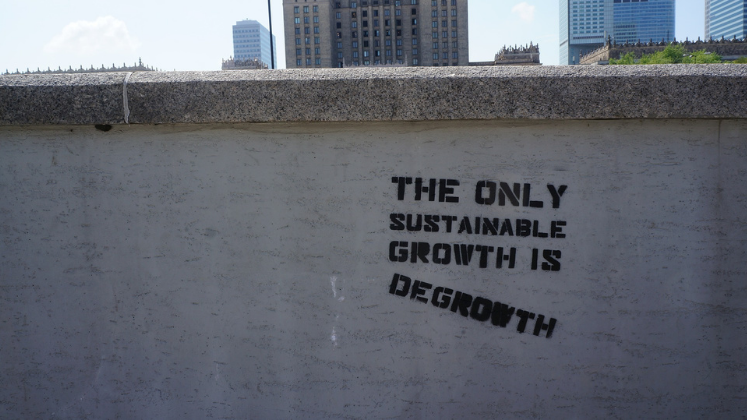In this post for International Women’s Day 2022, Ana Karen Andrade highlights the mobilisation of feminist movements in Mexico. Ana argues that despite setbacks, including the pandemic, we must collaborate on a global scale to take these movements forward, eliminate gender bias and create greater safety for women.
Much like everywhere else in the world, we will never forget March 2020 in Mexico. While the COVID-19 lockdown remains the most salient memory from those times, we should also remember how women united and mobilized to evoke the fear that had been brewing inside us. The fear was of never coming home again, of being reduced to nothing, and of nothing being left from the position for which we fought continuously to deserve. “A day without us” we called it; the national female strike that shook Mexico is a day worth remembering.
Narrative
The Mexican macho image is more than fiction. This narrative has developed the identity of a significant portion of men, which has sadly led to historical oppression and violence towards Mexican women. (Gamlin, J. B., & Hawkes, S. J., 2017).
The problem has grown in scale so much that during the 1990s and early 2000s, murders in Ciudad Juarez gained national and international attention, with hundreds of women found dead. And that has only augmented year after year. In “2020, approximately 10 women were killed every day in Mexico, and the rate of femicide doubled in the last 5 years. Femicide is an inherently intimate crime. More than 40 percent of femicide victims in Mexico knew their killer.” (Sandin, 2020).
That is the tip of the iceberg of a major systemic issue regarding gender inequality in Mexico. Epistemic injustice is at the root of prejudice against women (Johnson, et al. 2021) which often results in quotidian micro-aggressions justifying domination and violence against them. Indifference and inertia towards major traumatic events such as rapes, partner violence or feminicides follow. Victim blaming (Johnson, et al. 2021) is a predominant social discourse: they are allegedly guilty; they were drunk, provocatively dressed, were not responsible mothers or were not supposed to be on the streets so late.
Social norms
Women’s human rights are constantly and systematically violated. Such transgressions are legitimized and naturalized by a common perception that devalues, degrades and objectifies women (UN Women, 2020). This stems from social norms and roles, which translate to institutional practices. The most salient and concerning is the justice procurement system, which makes justice seeking financially and emotionally costly often revictimizing women that report crimes. Violence is so normalized and structural that reporting has become dangerous (Amnesty International, 2021).
Demanding justice
On the quest to gain visibility towards this topic, feminists have voiced the demand for justice through different forms of protest. Some have gone from artistic representations to voice justice such as “Las Tesis” flashmob “A Rapist on your way”, to plays, grafitti, and street protests. Every single resource that came into mind of the feminist movement resulted in diminishing comments, mocking and ridicule. Indolent and sometimes grotesque messages were posted arguing that violence must not be fought with more violence and even justifying murders and rapes. Some men portrayed the women who engaged in radical acts such as grafitti, as not deserving the respect that they so desperately pursued. Through such a perspective, women are reduced to as little and small as possible. They are perceived as second beings who hardly deserve to live.
Perhaps this might explain why and how, when in February 2020, 25-year old Ingrid Escamilla and 7-year old Fatima were murdered, feminist collectives all over the country decided to find a way to escalate the case. Fed up with escalating gender-based attacks and murders, activists finally called for a day-long national strike by women who demanded greater support for their rights (Villegas, P., & Semple, K., 2020). It started as an idea for women who had already participated in feminist collectives to gather around for the annual protests. Building through social media, the movement was simple: women would not attend school, work, stores, restaurants, etc. Additionally, they were asked to temporarily stop any caregiving activity at home and suspend their activity on the social media. Essentially, the movement attempted to draw the attention of men, by simulating an experience in which women did not exist.
Unsurprisingly, this soon became a national concern: commerce chambers voiced their opinion, private and public universities granted permission to their female employees to participate in the movement and even some public organisations demonstrated their support on the media. The street protest on 8th of March was followed by the strike. I remember having a different feeling that year as I participated in the protest: for once, all women stood together to fight for a common cause.
Group-efficacy and group-based anger (Stewart, 2017) agglutinated a seemingly heterogeneous group of women from all social backgrounds towards a common claim: no more putting up with micro-aggressions and systemic violence. Wearing purple and green scarfs we marched, screamed together “No one less”, “Let’s abort the patriarchal system”, “No more, no more, no more murdered women” “They took them alive, we want them alive”. On one hand, there was the realization that we were together on this and that as a collective our demands would be listened. On the other, we realized that we were all somehow victims of violence: we had been harassed in our workplaces or schools, we had felt fear from our loved ones not being able to arrive home. Basically, we were being killed and blamed for it! The common fear which we all shared was undermined and deemed as irrational. This all fed into the rage which in turn led to a strike after the protests.
This is a memory I wish we could hold on to forever. For the first time, we had finally managed to draw the attention of the other half of our community and had even managed to pique their interest in learning something which had forever been a blind spot. The hope soon faded away though as the Coronavirus pandemic hit and, once again, an unprecedented violence seemed to have dissolved all our efforts. Some women experienced severe domestic violence during the pandemic, while others were further pressured by greater care-giving responsibilities.
Coming together for our future
Today, our fight in Mexico is far from over. We must collaborate globally to consider various ways through which we can one day hope to prosper and relieve ourselves from the unheard claims. Meanwhile, one thing is certain: the feminist movement is characterized not only by its ability to create and cement narratives, symbols and colours of its own. It is unified by women who share rage for burning through the walls which part us from the peace, safety and hope that we’ve been longing for.
Notes
- The views expressed in this post are of the author and not the Department of Psychological and Behavioural Science, nor LSE.
- This post is part of a series for International Women’s Day 2022, written by students from the Department of Psychological and Behavioural Science at LSE. Read all the posts in the series here.
- Featured image sourced via Pixabay.
References
Amnesty International. (2021, September 24). Mexico: Justice on Trial: Failures in criminal investigations of femicides preceded by disappearance in the State of Mexico. https://www.amnesty.org/en/documents/amr41/4556/2021/en/
Gamlin, J. B., & Hawkes, S. J. (2017). Masculinities on the Continuum of Structural Violence: The Case of Mexico’s Homicide Epidemic. Social Politics: International Studies in Gender, State & Society, 25(1), 50–71. https://doi.org/10.1093/sp/jxx010
Johnson, V., Nadal, K., Sissoko, D., & King, R. (2021). “It’s Not in Your Head”: Gaslighting, ‘Splaining, Victim Blaming, and Other Harmful Reactions to Microaggressions. Perspectives on Psychological Science, 16(5), 1024-1036.
Russell, D. (2012, November 26). DEFINING FEMICIDE. Diana E. H. Russell, Ph.D. http://www.dianarussell.com/f/Defining_Femicide_United_Nations_Speech_by_Diana_E._H._Russell_Ph.D.pdf
Sandin, L. (2020, March 19). Femicides in Mexico: Impunity and Protests. Center for Strategic and International Studies. https://www.csis.org/analysis/femicides-mexico-impunity-and-protests
Stewart, A. (2017). Men’s Collective Action Willingness: Testing Different Theoretical Models of Protesting Gender Inequality for Women and Men. Psychology of Men & Masculinity, 18(4), 372-381.
UN Women Mexico. (2020, December). La violencia feminicida en Mexico: Aproximaciones ytendencias. https://mexico.unwomen.org/es/digiteca/publicaciones/2020-nuevo/diciembre-2020/violencia-feminicida
Villegas, P., & Semple, K. (2020, February 27). Women in Mexico Are Urged to Disappear for a Day in Protest. The New York Times. https://www.nytimes.com/2020/02/26/world/ americas/mexico-un-dia-sin-nosotras.html






My admiration to you for rising awareness through your voice